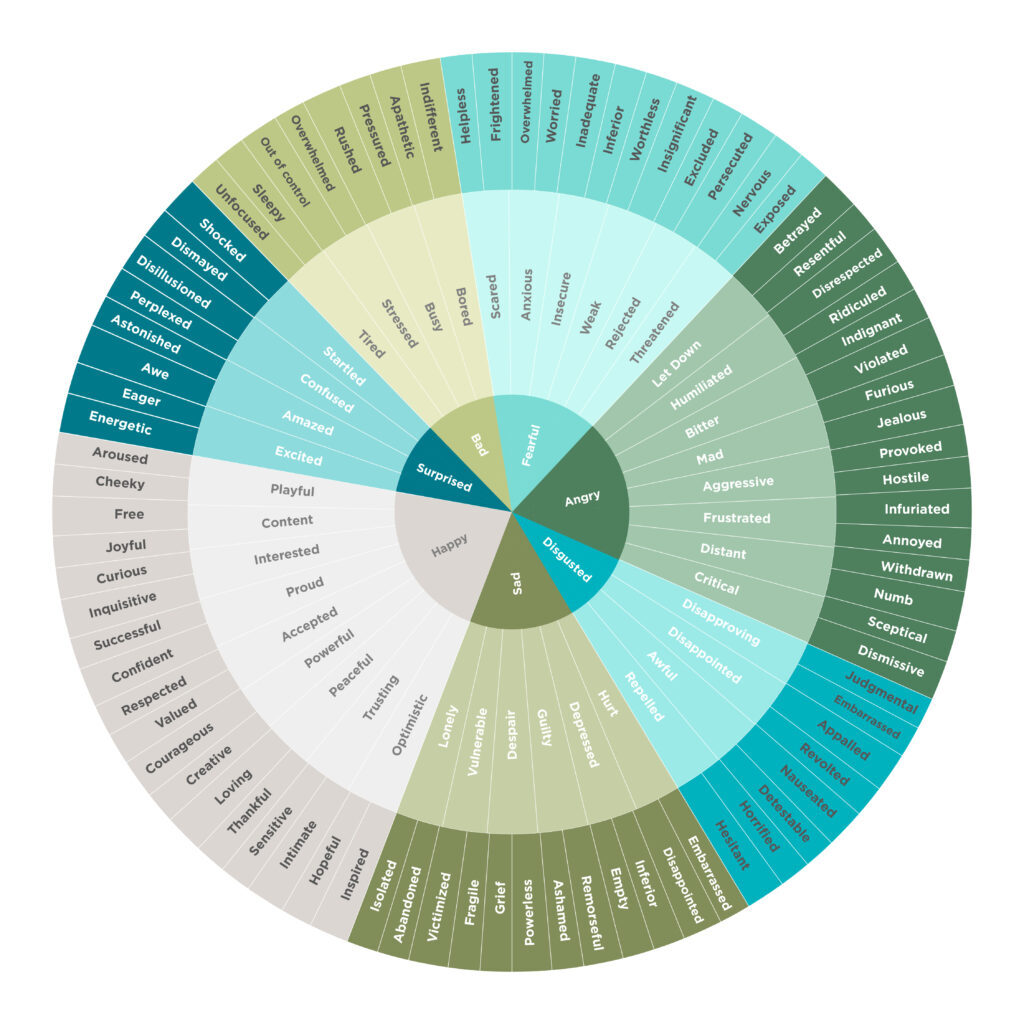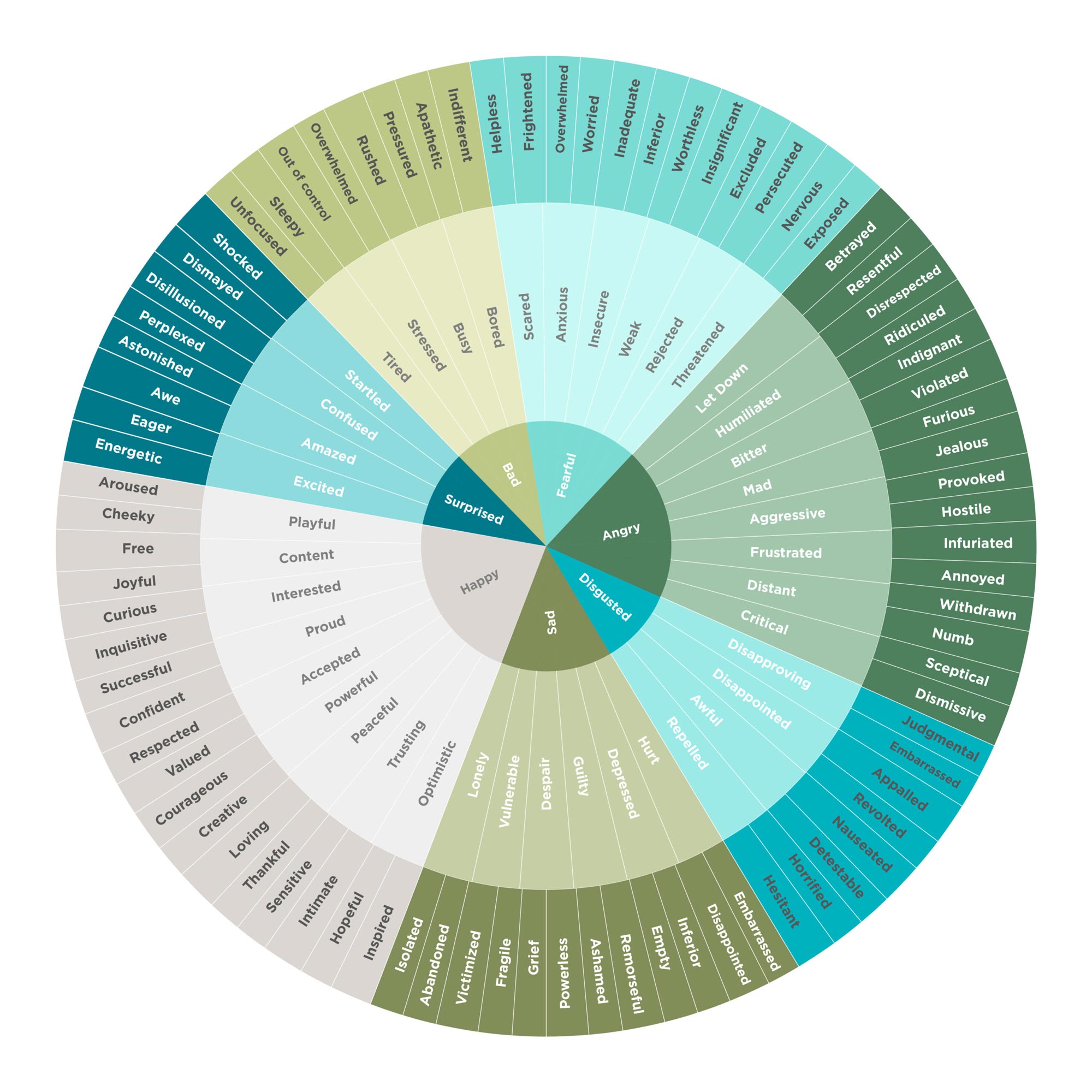Understanding and communicating your emotions can help you move through uncomfortable feelings while building resilience and mental well-being. But sometimes, it’s easier to default to basic descriptions like “happy,” “sad,” “bored,” or “tired” when it’s too consuming to fully wrap your head around how you feel. The Emotion Wheel can be a helpful tool that lets you clearly identify which emotion you’re experiencing.

How it works
The next time an emotion takes hold of you and you can’t quite name it, start at the center of the wheel. Which word most generally describes how you’re feeling? Fearful? Angry? Disgusted? Sad? Happy? Surprised? Bad?
The next ring identifies more specific emotions that fall within the first category you chose. If you’re feeling sad, is it coming from a sense of loneliness? Or are you feeling guilty or hurt? From this point, the wheel challenges you to break it down even further, getting to the most specific emotion you may be feeling.
Why it matters
Especially when you’re experiencing a negative emotion, it can be difficult to look at the situation from a birds-eye view. By taking a step back and identifying your feelings, you may also gain perspective on why you feel that way and what solutions are available to getting through or overcoming difficult emotions.
If you’re feeling lonely, is it a sense of isolation or abandonment? Distinguishing between the two can mean the difference between recognizing and resolving a pattern of self-isolation or identifying and communicating your loved one’s behavior that brings up fears of abandonment.
However you utilize this tool, it’s important to identify your emotions, fully experience them, and reach out for help if you feel they could be of risk to your well-being or others’.






